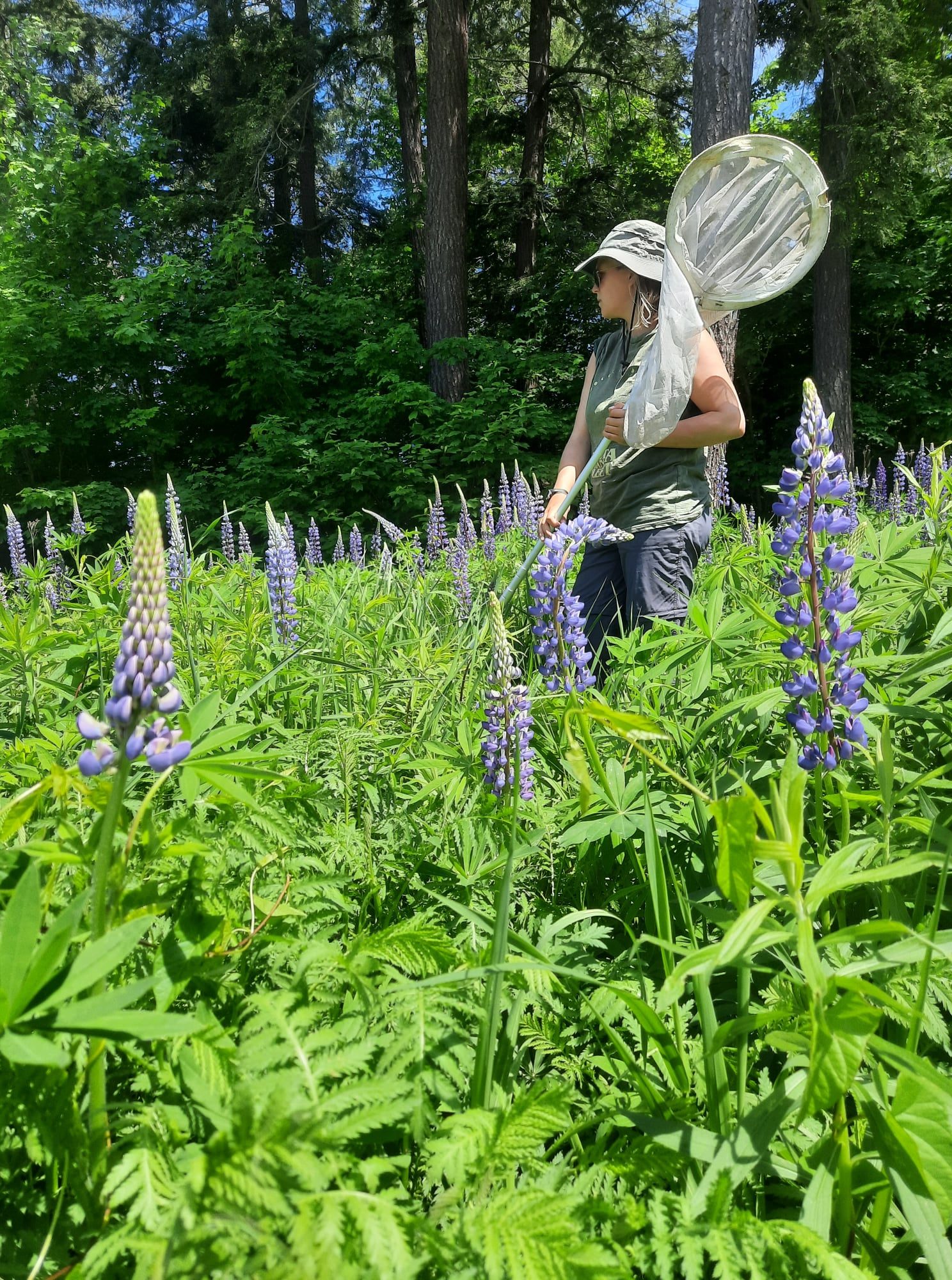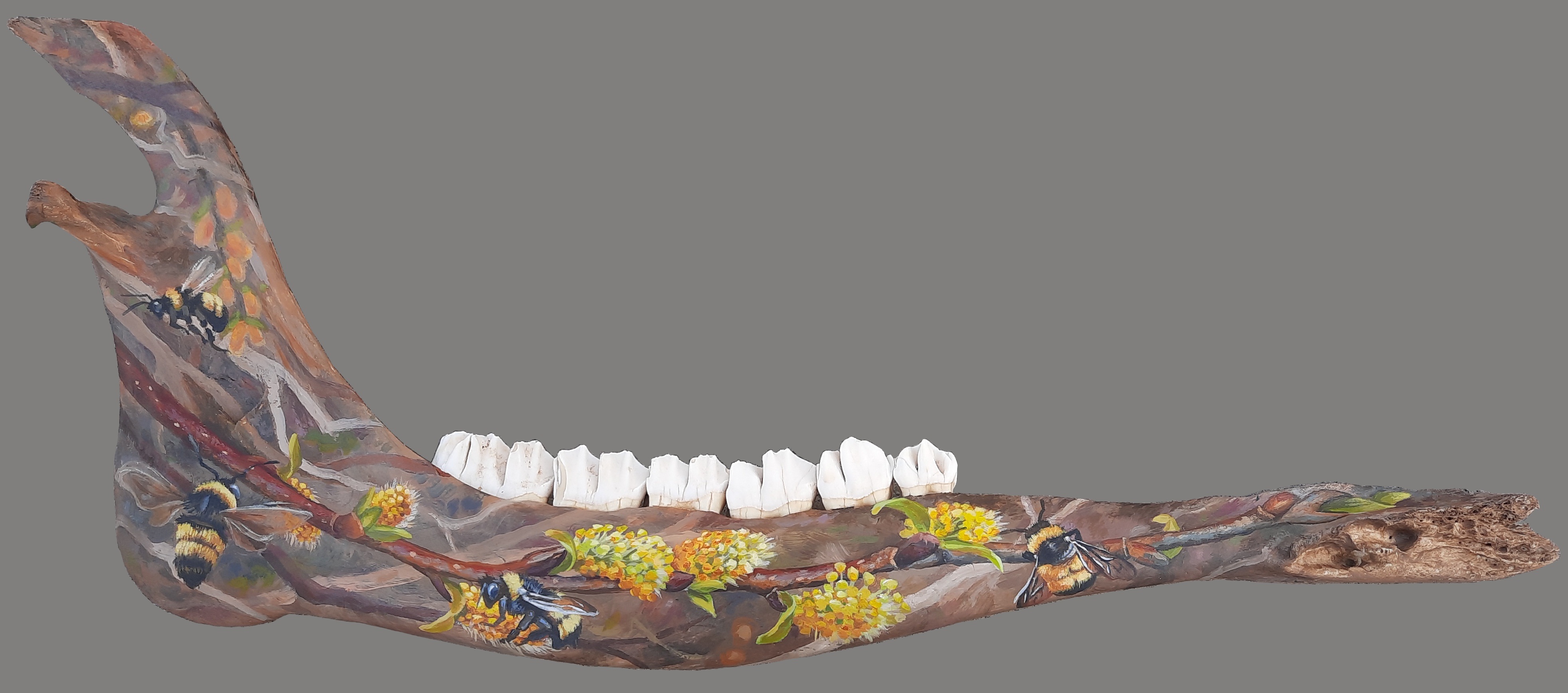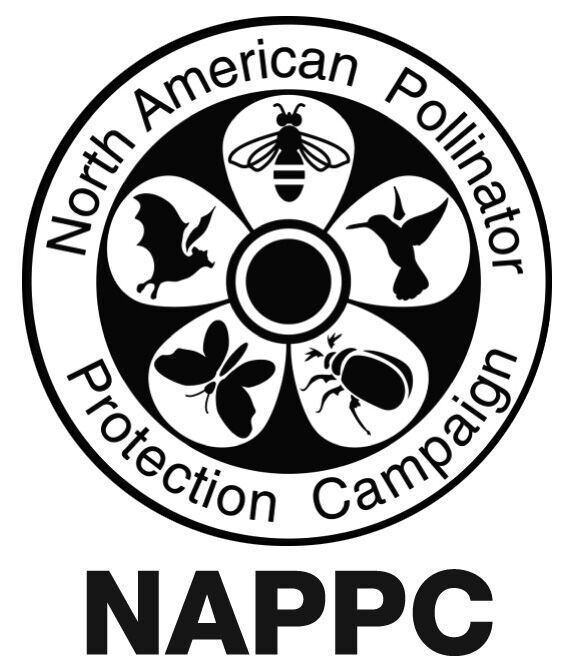Stacey Kinder - Artist and Conservationist
Food, spices, oils, and fibers – pollinators excel at making these items possible. The complexity of the pollinator world is astounding because of the roles they play and their vitality to healthy ecosystems. We celebrate these achievements through the incredible people and projects that are working to conserve pollinators. We hope these stories encourage and empower you to better understand who our pollinators are and what actions you can take to help them. This Pollinator Conservation Spotlight shines on Stacey Kinder, an artist and conservationist based in Canada.
Stacey Kinder conducting field research

Q: How would you describe this artwork in 2-3 sentences?
A: As an ecologist and conservationist, I study the relationships between plants, animals, and their habitat. My paintings celebrate the beauty of Canadian wildlife and the interconnection of all species (including ourselves) on a biological and spiritual level.
Q: What got you interested in or inspires you about pollinators?
A: Pollinators are some of the first animals that anyone can watch to explore and learn about nature and local ecology. I would say childhood curiosity was the hook for me, I have been in awe of their diversity and beauty for as long as I can remember. My mum always planted a garden, and my dad is an avid outdoors person. As kids we would watch the flowers and food grow, and with it came the birds, butterflies, bees, and a whole other world of insects. It was easy to see the connection that both plants and pollinators relied on one another. To me, that is the most inspiring thing, that we need diversity. We need every unique being to do what they do best, for healthy life to thrive. The visual beauty of every plant and insect is a bonus that makes my heart flutter. I never get bored of the symphony of colors.
Q: What is the target audience for this work?
A: Absolutely everyone! My work connects with other like-minded naturalists and nature enthusiasts, but the aim is to reach those who usually look past insects and other minute details of nature. It has become easy to disconnect from nature, so I hope to re-engage everyone with their local ecosystems. Oddly enough, even in the most inner part of Toronto, people still crave seeing images of wildlife and nature. It soothes our soul on an unconscious, primal level. My wildlife murals are a way of reminding us that we still are animals that live in a habitat amongst other species, even in the city.
Q: What successes have you achieved?
A: I am humbly proud of the teams I have worked for, who have made significant contributions to conserving species at risk like the yellow banded bumble bee. I collected data for a group of biologists from Wildlife Preservation Canada. Being a part of a team that is making scientific breakthroughs that will conserve species at risk feels larger than life. My artwork is a tool to communicate what I learn as I traverse through my career in conservation. I have shown in galleries internationally and published in magazines, however I feel success the most when my painting connects with someone in a way that inspires change.
Q: What is your biggest challenge?
A: There are lots of hurdles along the way in both the scientific and artistic aspects of my career. The challenge I struggle with the most is finding funding for the larger artistic projects.
Q: How do you engage with your community regarding this work?
A: Face to face engagement works best for me. I struggle to maintain a presence on social media, although it is an incredible and effective tool. Public art and painting murals is the most rewarding engagement. This gives me time to talk about what I am painting, such as pollinators. I create personal connections with people, and we educate each other. I see people change their mind about hating certain animals like bees. People love to tell me stories about when or where they encountered the animal I am painting, and I love hearing about it!
Artwork by Stacey Kinder

Q: What is something about pollinator conservation that you wish more people knew?
A: Know your neighbor and use native plants. Connect with the wildlife that live outside your doorstep. No matter where you are, there is life. From microscopic biota in the soil to the birds in the trees. When you know your neighbor, you will be more likely to care and protect them. The best way to start learning about your local habitat is to sit quietly and observe something you had not noticed or understood before. This will bring unlimited amounts of joy and enlightenment.
The second tip is to plant native plants for wildlife. There is a lot of information about planting gardens and making space for native plants. Furthermore, many garden centers sell plants that are non-native, meaning they do not exist naturally in your local ecosystem. Learn which of these may be invasive in your area and do not purchase them. These plants escape our gardens and can take over natural habitats by out-competing native plants.
Q: Where can readers find more information about your work?
A: I post my artwork on Instagram @staceykinderart. I will be taking on several interesting projects, from small documentaries to T-shirt designs, murals and all kinds of citizen science.

Alone no individual or entity can address all pollinator conservation needs, but through collaborative conservation we can and will make a difference for pollinators and the ecosystems they help support. Keep following our Pollinator Conservation Spotlight series to hear more inspiring pollinator conservation stories. Do you know a great project or organization that is addressing critical pollinator conservation topics and deserve their moment under the spotlight? Let us know!
Article contributed by Kiara Kamara, U.S. Fish and Wildlife Service for the NAPPC Pollinator Communications Taskforce.
